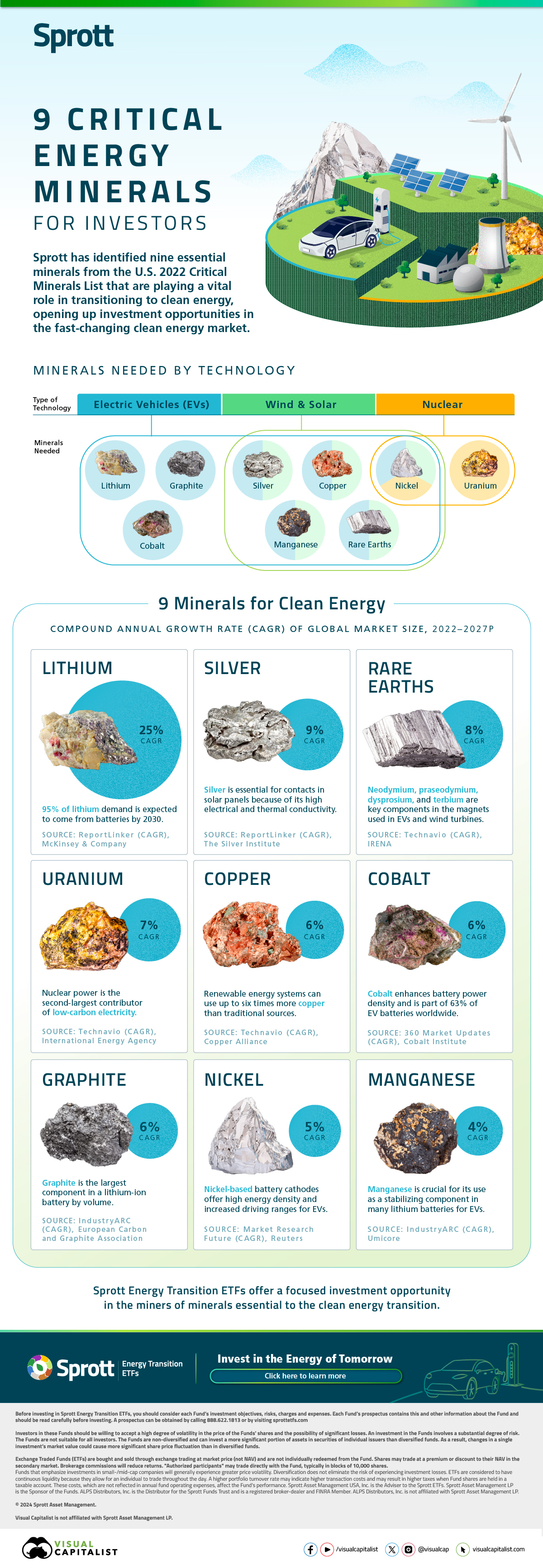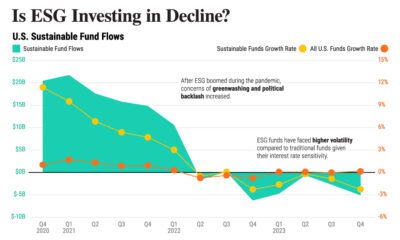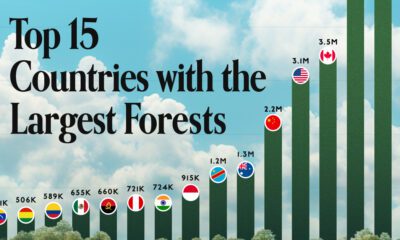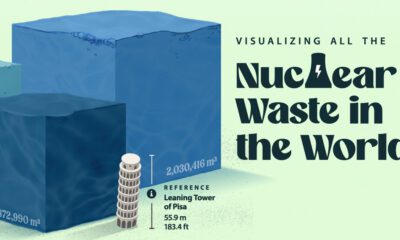
Published
37 mins ago
on
April 5, 2024
| 26 views
-->
By
Tessa Di Grandi
Article & Editing
- Selin Oğuz
Graphics & Design
- Zack Aboulazm
The following content is sponsored by Sprott
Visualized: Nine Critical Energy Minerals for Investors
Emission-free technologies such as electric vehicles (EVs), solar panels, wind turbines, and nuclear reactors are critical to reducing energy-related emissions and fulfilling net zero goals by 2050.
In this graphic, we’ve partnered with Sprott to explore nine minerals crucial for these technologies and their projected compound annual growth rates (CAGR) in global market size from 2022 to 2027.
Identifying the Nine Key Clean Energy Minerals
Sprott has identified the following minerals from the U.S. 2022 Critical Minerals List as fundamental to the energy transition, offering significant financial opportunities for investors as the transition accelerates.
Let’s delve into each one.
- Cobalt: Maximizes the stability and longevity of batteries. Cobalt is part of the chemistry of 63% of EV batteries worldwide.
- Copper: Essential for conductivity in electrical infrastructure, including wind, solar, and EV charging stations. In general, renewable energy systems can use up to six times more copper than traditional ones.
- Graphite: The largest component of lithium-ion batteries used for EVs and energy storage.
- Lithium: An essential component of electrolytes in EV batteries and lithium-based energy storage systems. By 2030, 95% of lithium demand is expected to come from batteries.
- Manganese: Used as an electrode in many lithium-ion batteries for EVs.
- Nickel: A key element in battery cathodes, offering higher energy density and longer driving ranges for EVs.
- Rare earths: A vital component in the magnets used in wind turbines and EVs.
- Silver: Essential for conductivity in solar panels and other electrical infrastructure, possessing the highest electrical and thermal conductivity among all metals.
- Uranium: The fuel for nuclear power plants that can provide dispatchable and low-carbon power to the electricity grid. Nuclear power ranks as the second-largest contributor to low-carbon electricity production.
Projected Growth for Clean Energy Minerals
With demand escalating for clean energy technologies, demand for their essential components is also expected to grow, offering avenues for investors to capitalize on the dynamic clean energy market.
Below we list the projected compound annual growth rates (CAGR) for each of these minerals, which is their average annual growth in market size over a specified period, taking into account the effects of compounding.
| Mineral | Compound Annual Growth Rate (2022–2027P) |
|---|---|
| Lithium | 25% (Source: ReportLinker) |
| Silver | 9% (ReportLinker) |
| Rare Earths | 8% (Technavio) |
| Uranium | 7% (Technavio) |
| Copper | 6% (Technavio) |
| Cobalt | 6% (360 Markets and Updates) |
| Graphite | 6% (IndustryARC) |
| Nickel | 5% (Market Research Future) |
| Manganese | 4% (IndustryARC) |
With an average projected CAGR of over 8% through to 2027, driven especially by demand for lithium, silver, and rare earth metals, investors are taking note.

Invest in the energy of tomorrow. Sprott Energy Transition ETFs offer a focused investment opportunity in the miners of the critical minerals essential to the clean energy transition.

Please enable JavaScript in your browser to complete this form.Enjoying the data visualization above? *Subscribe
Related Topics: #mining #copper #silver #investing #lithium #solar #clean energy #investors #critical minerals #clean energy transition #sprott #clean energy minerals #cagr
Click for Comments
var disqus_shortname = "visualcapitalist.disqus.com";
var disqus_title = "Nine Critical Energy Minerals for Investors";
var disqus_url = "https://www.visualcapitalist.com/sp/nine-critical-energy-minerals-for-investors/";
var disqus_identifier = "visualcapitalist.disqus.com-165819";
You may also like
-

Markets1 month ago
The World’s Top Cocoa Producing Countries
Here are the largest cocoa producing countries globally—from Côte d’Ivoire to Brazil—as cocoa prices hit record highs.
-

Green2 months ago
Charted: Share of World Forests by Country
We visualize which countries have the biggest share of world forests by area—and while country size plays a factor, so too, does the environment.
-

Green2 months ago
2024 U.S. Clean Electricity Outlook
In this graphic, we explore the projected generation capacity of different clean electricity technologies in the U.S. for 2023 and 2024.
-

Green2 months ago
Chart: Is ESG Investing in Decline?
After the pandemic boom, ESG investments lost their luster amid high interest rates. Could they make a comeback?
-

Environment2 months ago
Which Countries Have the Largest Forests?
Together, the top five countries with the largest forests account for more than half of the world’s entire forest cover.
-

Green2 months ago
Visualizing All the Nuclear Waste in the World
Despite concerns about nuclear waste, high-level radioactive waste constitutes less than 0.25% of all radioactive waste ever generated.
Subscribe
Please enable JavaScript in your browser to complete this form.Join the 375,000+ subscribers who receive our daily email *Sign Up
The post Nine Critical Energy Minerals for Investors appeared first on Visual Capitalist.